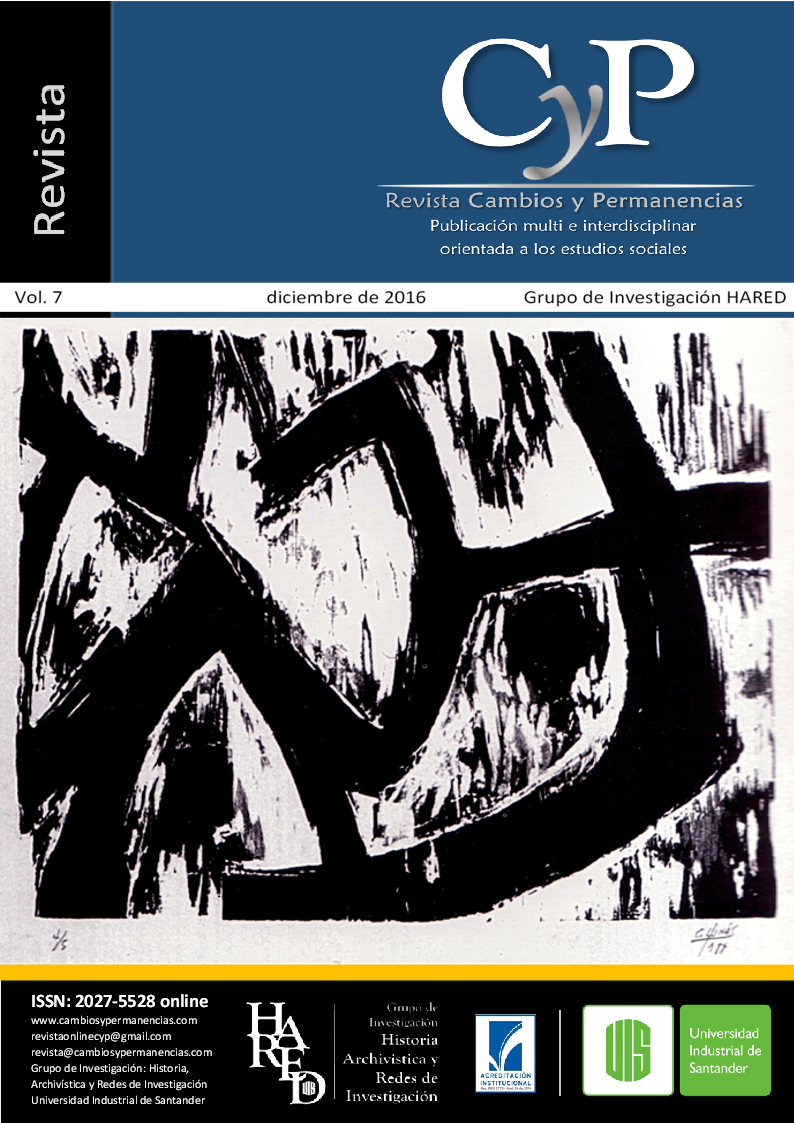Investigadores en Formación
Humor as social and political complaint: "The Great Dictator" by Charles Chaplin
Published 2016-12-05
Keywords
- Nazi regime,
- cinema,
- humor,
- history
How to Cite
González, G. G. (2016). Humor as social and political complaint: "The Great Dictator" by Charles Chaplin. Cambios Y Permanencias, (7), 572–589. Retrieved from https://revistas.uis.edu.co/index.php/revistacyp/article/view/7065
Abstract
The Nazi regime has been recreated from the film over and over again in an attempt to show the horrors that were subjected thousands of people. We analyze the first film that portrayed the figure of Adolf Hitler. This was The Great Dictator, Charles Chaplin, who in 1940 showed the world, from the satiric humor, the engineering of this regime and the weaknesses of the dictator.
Our purpose is to know what the humoristic resources that were appealed in the film and explore the possibilities of humor in film as an effective tool for understanding contemporary history were.
Downloads
Download data is not yet available.
References
Bracher, K. D. (1995). La dictadura alemana. 1. Génesis, estructura y consecuencias del nacionalsocialismo. Madrid: Alianza Universidad.
Conceptos Siglo XX. (2008). Gran Dictador: análisis del film. Recuperado de: www.historia1imagen.com
Ferro, M. (1991). Perspectiva en torno a las relaciones Historia-Cine. Revista Film Historia Online. 1. (1). 1-7.
Hernández Muñoz, S.M. (2008). El humor como estrategia y reflexión en la publicidad española. Valencia: Universidad Politécnica de Valencia.
Hobsbawm, E. (2000). Historia del siglo XX. Barcelona: Crítica.
Kershaw, I. (2000) Hitler 1936-1945. Barcelona: Ed. Península.
Levin, F. (2012).El humor reprimido. Tiras y viñetas del diario Clarín durante los años de represión y censura (Argentina 1974-1982). Revista Confluenze de Estudi Iberoamericani, 4 (2), 233-273.
Martínez Valero, T. (s.f.). El Gran Dictador. Recuperado de: www.cinehistoria.com
Rosestone, R. A. (1988). La historia en imágenes/la historia en palabras: reflexiones sobre la posibilidad real de llevar la historia a la pantalla. Forum de The American Historical Review, 93 (5), 91-108.
Filmografía
Charles Ch. (1940). El Gran Dictador. (Cinta cinematográfica) Estados Unidos. United Artists.
Conceptos Siglo XX. (2008). Gran Dictador: análisis del film. Recuperado de: www.historia1imagen.com
Ferro, M. (1991). Perspectiva en torno a las relaciones Historia-Cine. Revista Film Historia Online. 1. (1). 1-7.
Hernández Muñoz, S.M. (2008). El humor como estrategia y reflexión en la publicidad española. Valencia: Universidad Politécnica de Valencia.
Hobsbawm, E. (2000). Historia del siglo XX. Barcelona: Crítica.
Kershaw, I. (2000) Hitler 1936-1945. Barcelona: Ed. Península.
Levin, F. (2012).El humor reprimido. Tiras y viñetas del diario Clarín durante los años de represión y censura (Argentina 1974-1982). Revista Confluenze de Estudi Iberoamericani, 4 (2), 233-273.
Martínez Valero, T. (s.f.). El Gran Dictador. Recuperado de: www.cinehistoria.com
Rosestone, R. A. (1988). La historia en imágenes/la historia en palabras: reflexiones sobre la posibilidad real de llevar la historia a la pantalla. Forum de The American Historical Review, 93 (5), 91-108.
Filmografía
Charles Ch. (1940). El Gran Dictador. (Cinta cinematográfica) Estados Unidos. United Artists.


